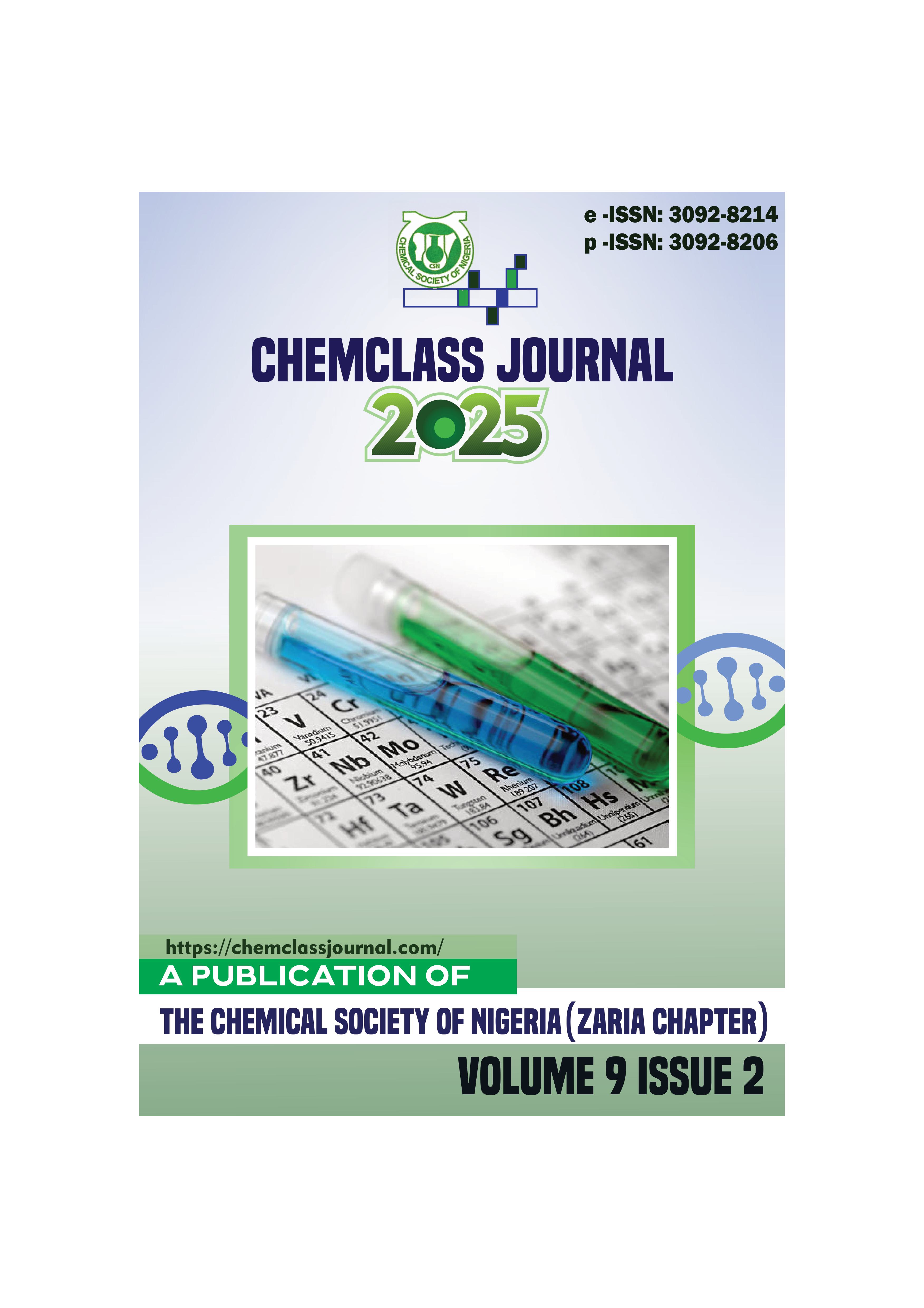Phytochemical Screening and Antimicrobial Activity of the Ethanol Leaf Extract of Pavonia hirsuta (Guill. & Perr.)
DOI:
https://doi.org/10.33003/chemclas-2025-0902/165Keywords:
Pavonia hirsuta , Phytochemical , Antimicrobial , Chromatography , IsolationAbstract
The leaf of Pavonia hirsuta is traditionally used to treat various diseases in different regions of Nigeria.
This study is aimed to evaluate the phytochemical constituents, antibacterial and antioxidant activity studies
on the crude leaf extracts of Pavonia hirsuta. The air-dried plant sample was powdered, extracted
successively with ethanol. The solid matter was separated by filtration and then filtrates were concentrated
using a rotary evaporator. The dried extract was subjected to a preliminary phytochemical screening test
using standard procedures and the result showed the presence Alkaloids, Tannins, Saponins, Steroids,
Terpenoids and Cardiac glycosides in the extract. Flavonoid was found to be absent. Antimicrobial activity
of the crude extract was determined by using well diffusion method. The ethanol extract of the leaves of
Pavonia hirsuta showed a significant inhibition zone on all of the selected bacteria (Staphylococcus aureus,
Escherichia coli, Pseudomonas aeruginosa, Salmonella typhi and Bacillus subtillis) and fungus (Candila
albicans). The extract was tested at five different concentrations (200 mg/mL, 100 mg/mL, 50mg/mL, 25
mg/mL and 12.5 mg/mL). It was found to be active against all the tested organisms except Esherichia coli.
The minimum inhibitory concentration (MIC) of the plant extract against Staphylococcus aureus,
Salmonella typhi, Pseudomonas aeruginosa, Bacillus subtillis and Candila albicans was found to be active
at concentrations of 50 mg/mL, 100 mg/mL, 50 mg/mL, 12.5 mg/mL and 12.5 mg/mL respectively. The
minimum bactericidal concentration (MBC) of the plant extract against Staphylococcus aureus, Salmonella
typhi, Pseudomonas aeruginosa and Bacillus subtillis was found to be active at concentrations of 100
mg/mL, 200 mg/mL, 100 mg/mL and 25 mg/mL respectively. The minimum fungicidal concentration
(MFC) of the plant extract against Candila albicans was found to be active at concentration of 25 mg/mL.
Bacillus subtillis has the highest zone of inhibition. The extract was isolated and purified by column
chromatography and thin layer chromatography 23 fractions were obtained and spotted then compounds
having same Rf value were combined together. FAU11 was obtained from the combination of fractions 8,
9, 10 and 11 with an Rf value of 0.46 cm therefore was further analyzed using Fourier Transform Infrared
spectroscopy and Gas chromatography-mass spectroscopy for characterization and identification of the
bioactive compounds present, five major compounds were isolated which are of biological significance
such as antioxidant, hypocholesterolemia, antiandrogenic, anticancer, antimicrobial activities. This study
showed that the leaves of Pavonia hirsuta constitute phytochemicals that possess antibacterial and
antifungal activities and can serve as a potential source in search of plant-based antibiotics.





 ChemClass Journal
ChemClass Journal
